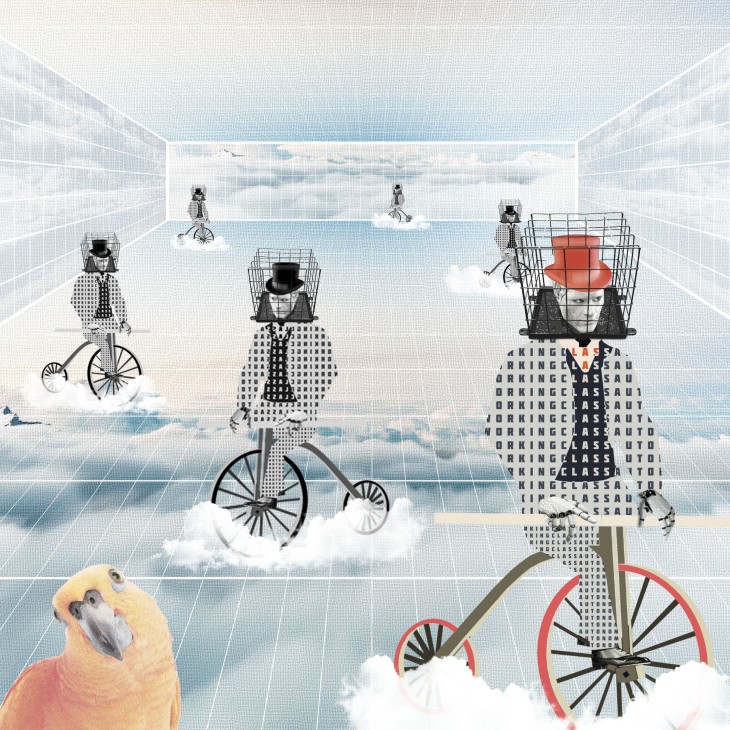
>>In the historical review of architecture as a discipline, but also as a practice that demarcated and materialized all the social, political and economical spectrum through the city and its specificity; it not only stablished different historical stages but also acted as a catalyzing entity which represented the continuos mutation of the “social” in many various ways. It is in one of these stages where the social [people] shifted from being the object of architecture [and city architecture] to became the subject. The emergence of this subjectivity[working class] and the social captivity that got them immersed due to the substitution of politics with economies[which suspiciously acts politically] as a mode of city governance, has became the key component in the foundation of the concept and terminology stablished by Cerda, which is called Urbanism[in reference of the roman concept of urbs].
>>During the review of the historical materialism advocated by Karl Marx, he stablished an intrinsic relationship between the modes of production and the conformation of the cities, not only in the morphological way but also in the social and all its content. In his thesis, the reflection relays in how the accumulation of capital and the possession of the means of production in a society have direct repercussions in the creation of inequity and social disruption, which is materialized in the society and in its immediate platform, the city. In these series of collages, I will “try” to explain the repercussion of the different economic systems and modes of production on the cities that emerged by those times.
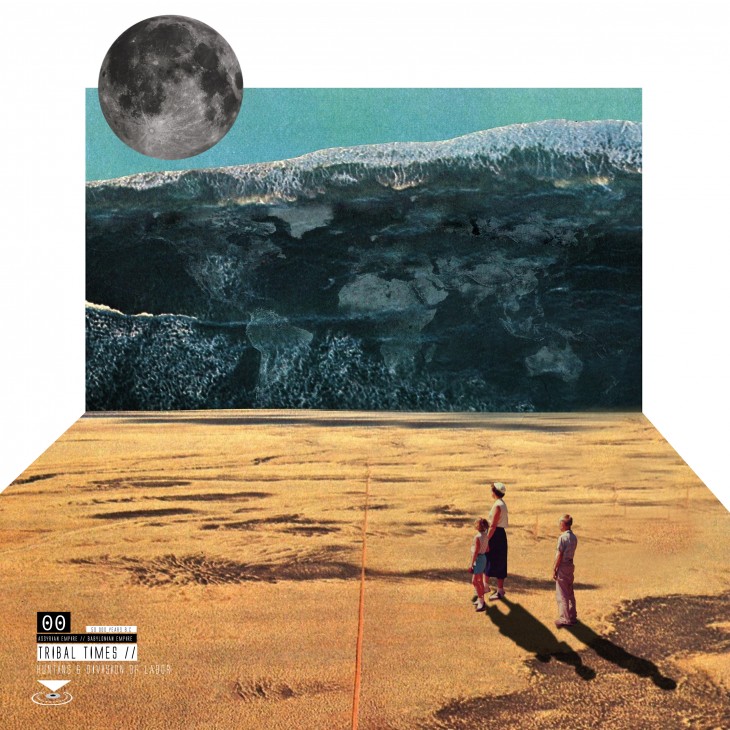
> During the tribal times, the main ethos laid in the simple grouping of the individuals and a incipient division of labor; where the concepts of private property and city were not stablished yet. Nevertheless, the division of labor had an acute distinction between the tribes, where the notion of production was intimately related of the primary need of subsistence.

>Is in the Mesopotamian time, during the Assyrian and Babylonian empires that the concept of the city emerged and subsequently became an important component in everyday life. This cultures maintain the agriculture as a principal productive source, and not but coincidence, they built their settlements near the rivers and the urban morphology responded directly to the approach of the irrigation channels.
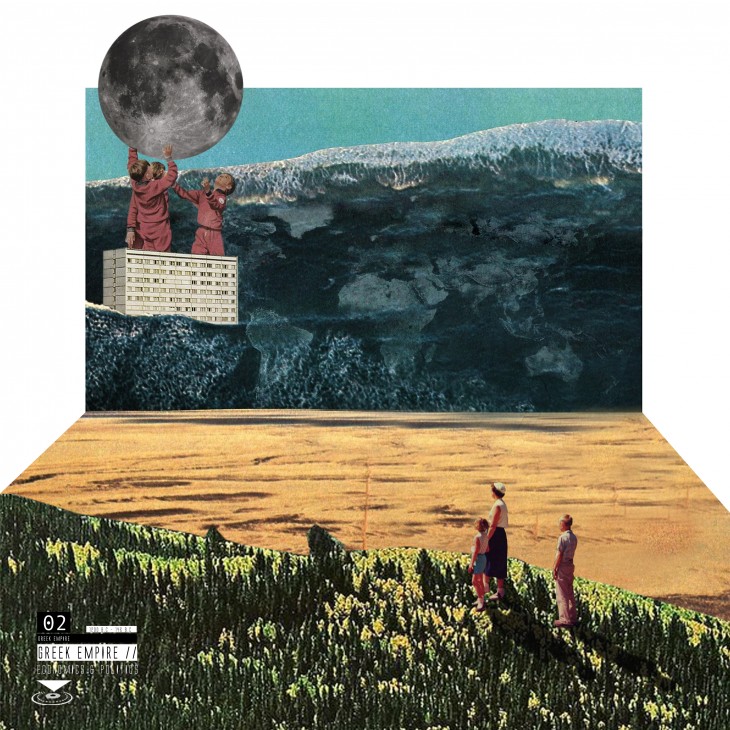
> During the greek time, Aristotle defined the city in two different streams: the techne politike[referring to the public space] and the techne oikonomike[referring to the private space]. In this sense, the polis took the leading role in the social ethos of that time, becoming the “space of the many”. Is in this specific historical period where the political sense of the city and its mere existence held the possibility of conflict and at the same time, the space for its resolution. “…The Greek polis can be described as an archipelago, not only because it took this geographical form, but also because the condition of insularity as a mode of relationships was its essential political form.” [Aureli:2011]
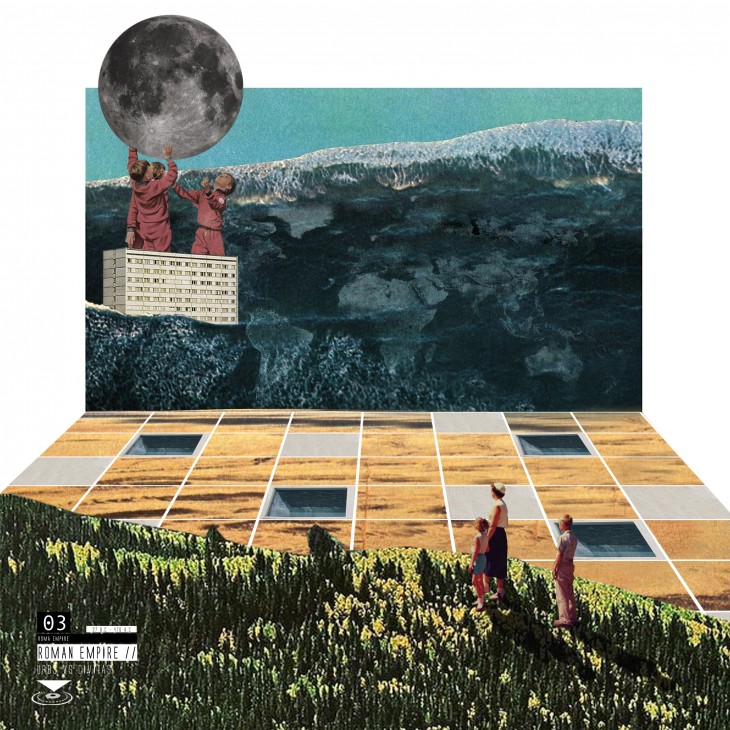
> Is during the roman empire, where the idea of the polis became distorted and disrupted. The urbs suddenly replaced the polis, but the paradigmatic approach dismantled the concept of the political within the city by replacing the concept of public with mere infrastructure, describing a generic condition of protected cohabitation reducible to the principle of the house and its material necessities. In comparison with the polis, the urbs was not intended to be restricted, it expanded in the form of a territorial organization in which the roads played a crucial role.[Aureli:2011]
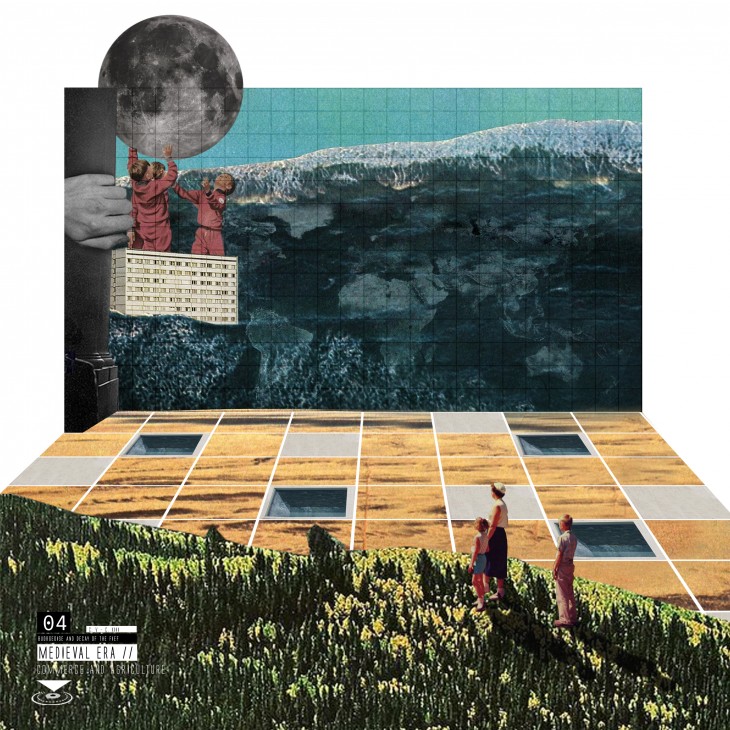
> Is in the medieval time when the notion of the division of labor got strongly acute and divided the social activities in commercial, agricultural and proto-industrial. This division of labor created the famous dichotomy and resilient antagonism between the urban and the rural. The most harmful characteristic in this era was undoubtedly the emergence of feudalism, which created hierarchical structures of territorial property. This depravation generated the emergence of the bourgeoisie, that took control of the urbs and its political measures and started the population outside the walls, the singularity of expansion.
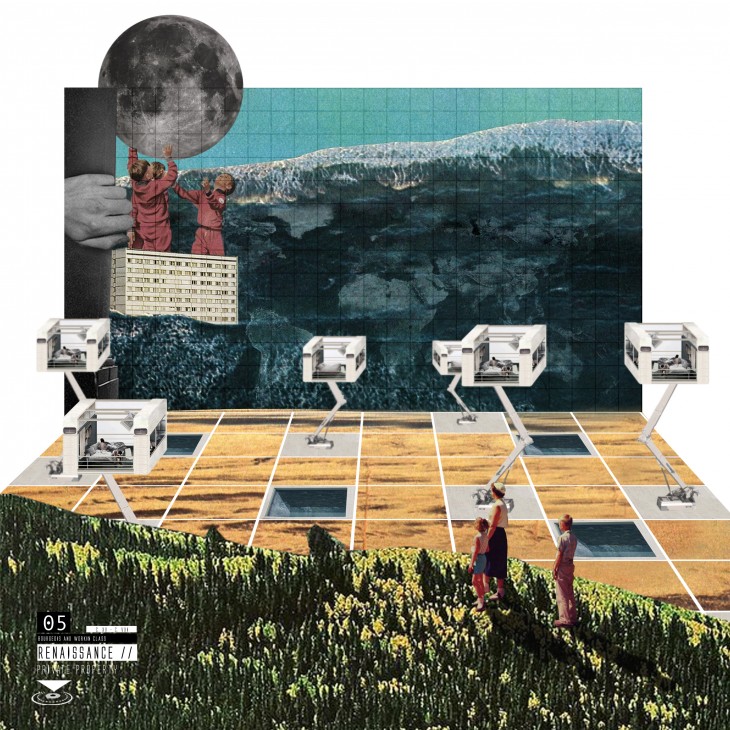
> Is in this particular historical stage[birth of renaissance in Florence] where the architecture subjectivity took form within the modern history by makings attempts in order to create representations through architecture; not just by showing the city but also by creating a specific subject which increased the problem[subjectivity]. The mode of production that characterized this time was the shift from and agrarian society to a proto industrial one, which was impulsed by the creation of modularity and perspective[Brunelleschi]. This particular event created and political and economical turmoil that produced the shift of the medieval city to a more controlable way[and expandable] of standardization and division of labor.
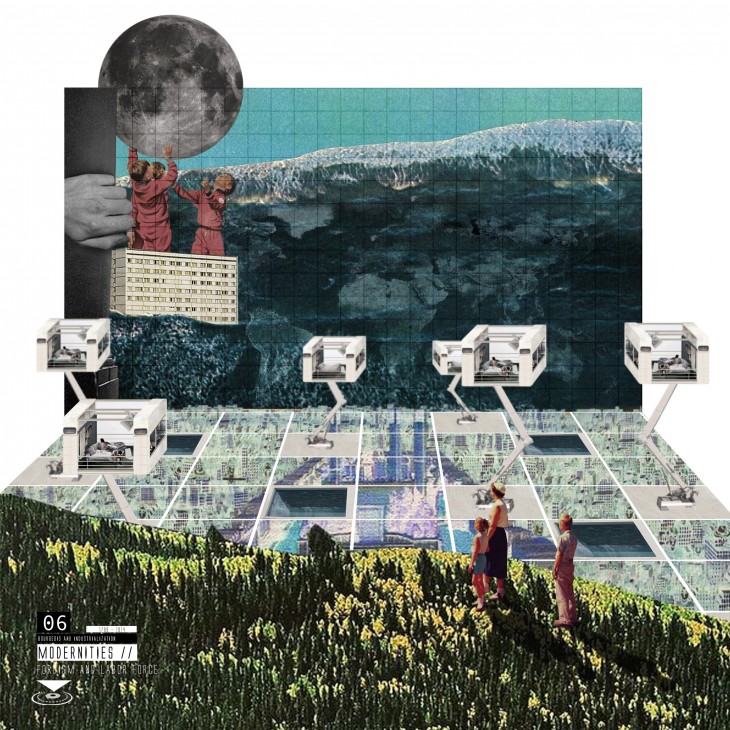
> After the first industrial revolution, the publish of the General Theory of Urbanization[Cerda] and the Capital[Marx]; the notion of expansion and standardization got imprint in the social ethos, where the working class played an important role in the evolution of the capitalist apparatus. The cities were no longer filled with city architecture, they got drowned with urbanism. The criticism of urbanism lays in the shortening, until the point of annihilation, of the political sense of the city. With the implementation of the welfare state(city) the subjectivity[working class] got totally under control and with no power of further response. This became a clear manifesto in the assembly line of the ford company, where the work of the human being was reduced to a monotone and repressive activity that kept them isolated and stunted.
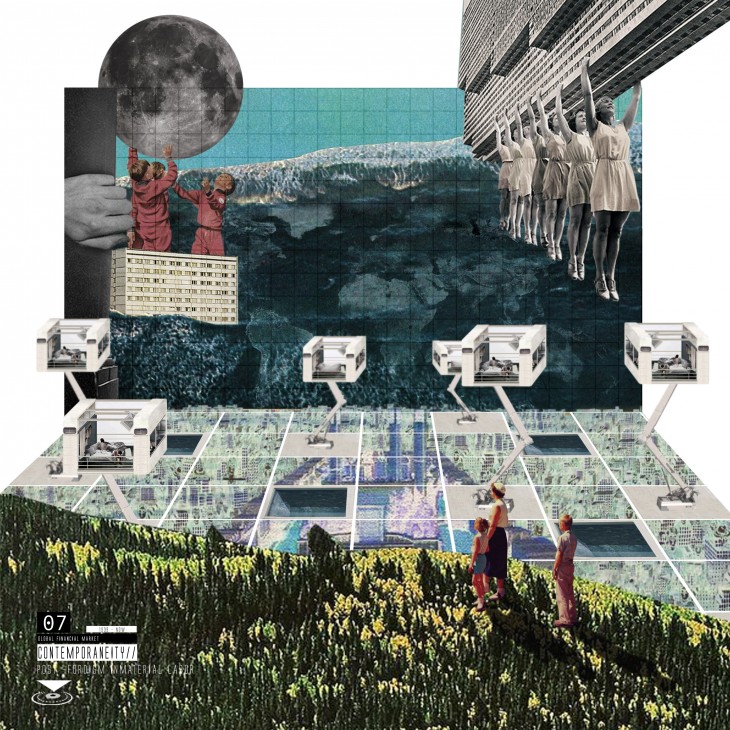
> Is after the world war II where the working class challenged Germany, and the shift from heavy industry[material labor] to inmaterial labor[office space] occurred. This is well-known as the post-fordist era where the abstraction of the space created a new subject: the inmaterial worker[office worker]. Is in this specific time where architecture played the role of materializing this new status quo. This creatio ex-nihilio got implemented in Berlin around the 1919 and the most significant agents were Mies Van der Rohe and Ludwig Hilberseimer.
> It is within this historical review and the criticism of urbanism as city planning and a way of governance that I tried to understand the genesis of this brilliant idea. It is pertinent to consider that Cerda took a tremendous reference and background studies from Spanish civil engineers who were dedicated in the construction of roads. This “methodology” was first implemented in the american colonies that were subjugated by Spanish Viceroy. This checkerboard typology was instituted in america near the mining camps in order to settle, exploit and educate the native americans in the religious and productive doings. This typology had the notion and the goal to create centralized focus of production and exploitation, in conclusion, to settle the workforce in order to extract all the commodities.
> In the drawing below, I kindly borrowed the graphic representation of Pier Vittorio Aureli’s project “Stop City” to show how in different cities of South America the checkerboard typology was implemented, and predisposed the beginning of centralization and the growth of social injustice until modern times.
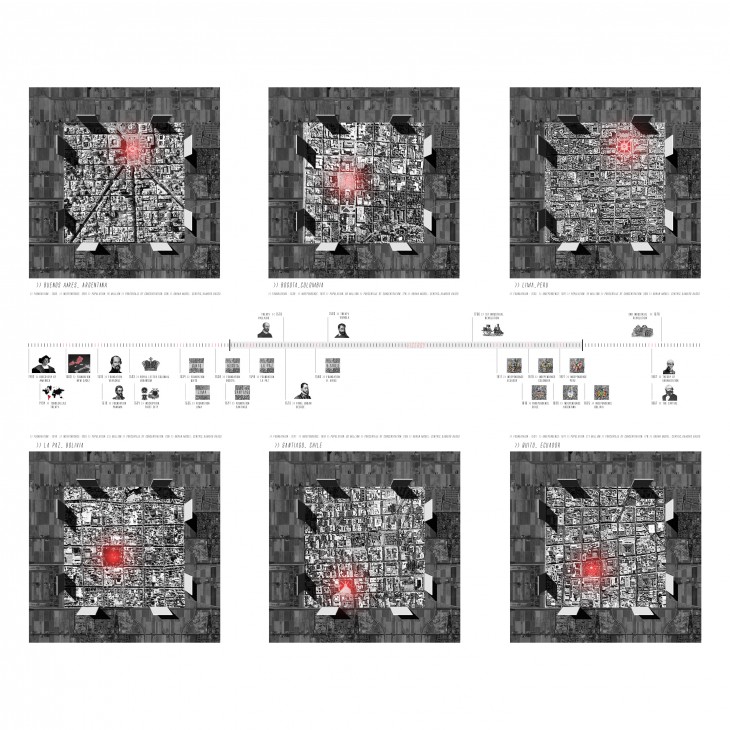
> In this project “Stop City” the concept in question is trying to challenge the idea of mass production and standardization that was clearly represented in the project by Archizoom called “Non-Stop City”. When the project “Non-Stop City” was published it had the idea to be an utopian representation of the consumerist city-society. Nevertheless, we can argue that it actually became an ironic representation of what cities are nowadays; where the concept bad infinity described by Hegel[the infinite creation of new, finite things just for the sake o new ones] is the contemporary ethos in our society, the instigation of production through the consumption of the “new”.

> After revising the historical context, I proceed to make an acuter study of the current situation of the countries that were under the domain of the Spanish Viceroy[Peru, Argentina, Chile, Colombia, Ecuador and Bolivia]. I studied their colonial imprints that still remain intact in the present days such as the centralized economies, the outsourcing of injustice and inequity, monoculture and the extraction of commodities as their main good for the global market’s interchange. In the following images I will show these subjects of study with a more detailed explanation and at the same time I will rise the question if it’s possible to integrate these economies and societies, to diversify the production and the aggregation of value in the economical chain of production inasmuch as the process of decentralization becomes an important catalyzer . And if there is this possibility , are the Andes[chain of mountains that link geographically this countries] the tangible opportunity to achieve this feat?
[CENTRALIZATION]
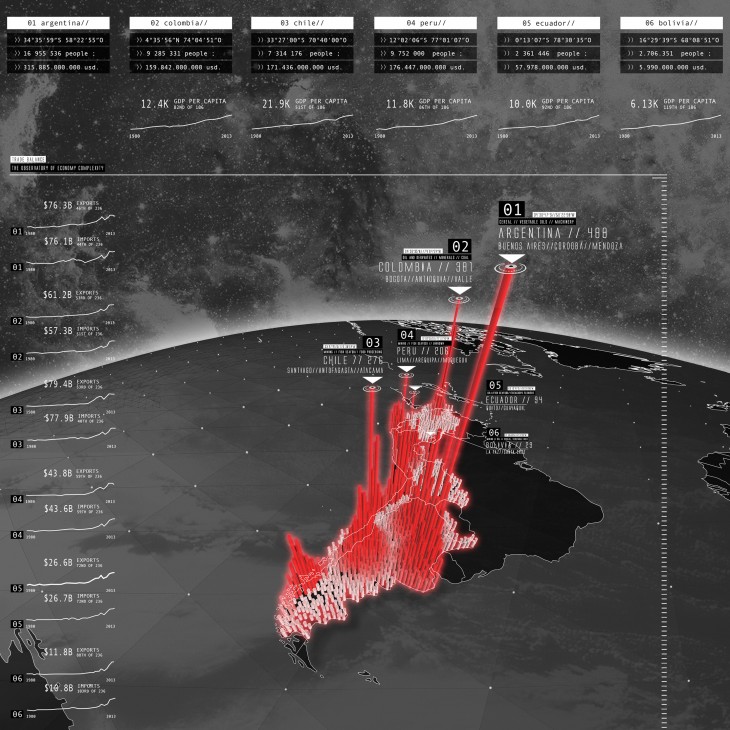
[THE ANDES]
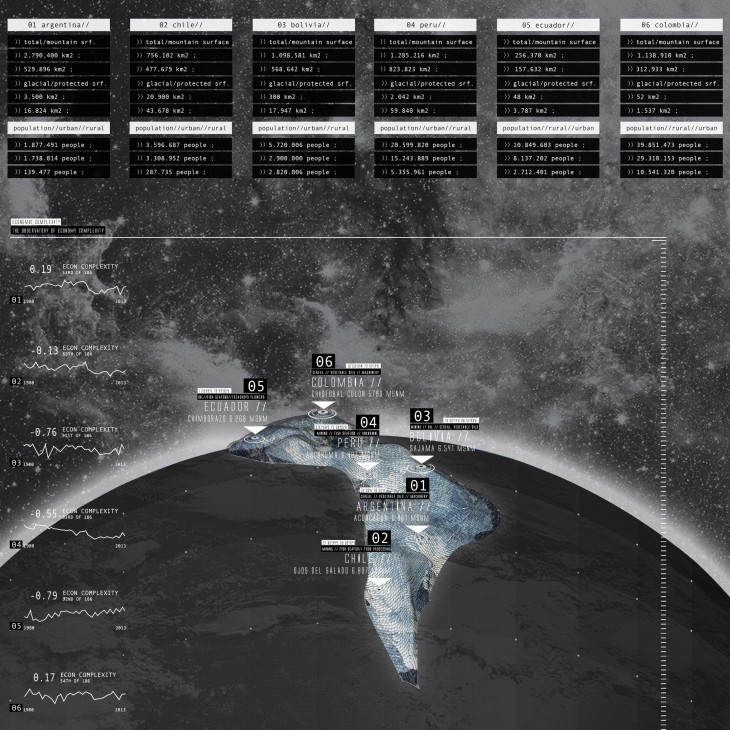
[EXTENSIVE AGRICULTURE]

[PARADOXICAL MINING]
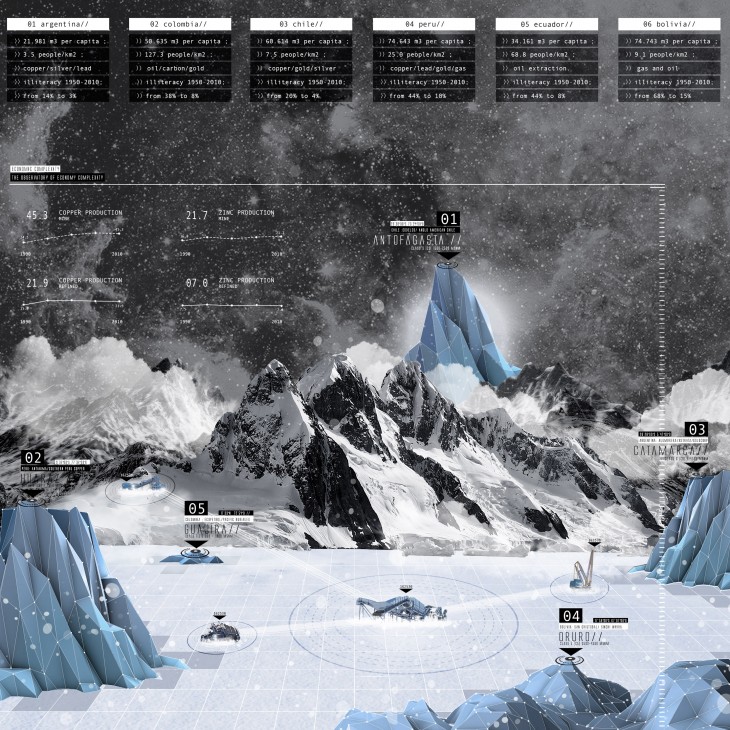
[PRODUCTIVE RECONVERTION?]
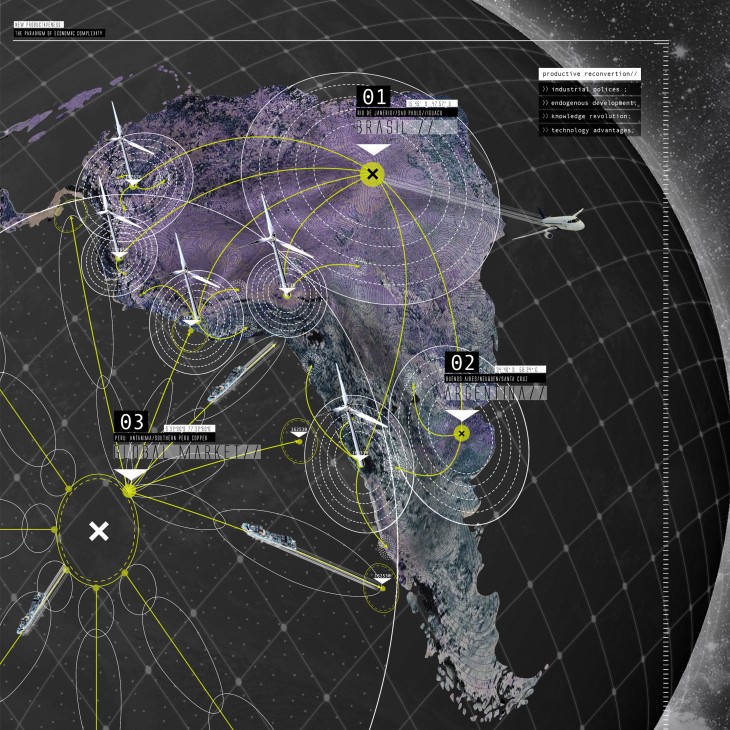
> Is Autonomy an Utopia or a right?
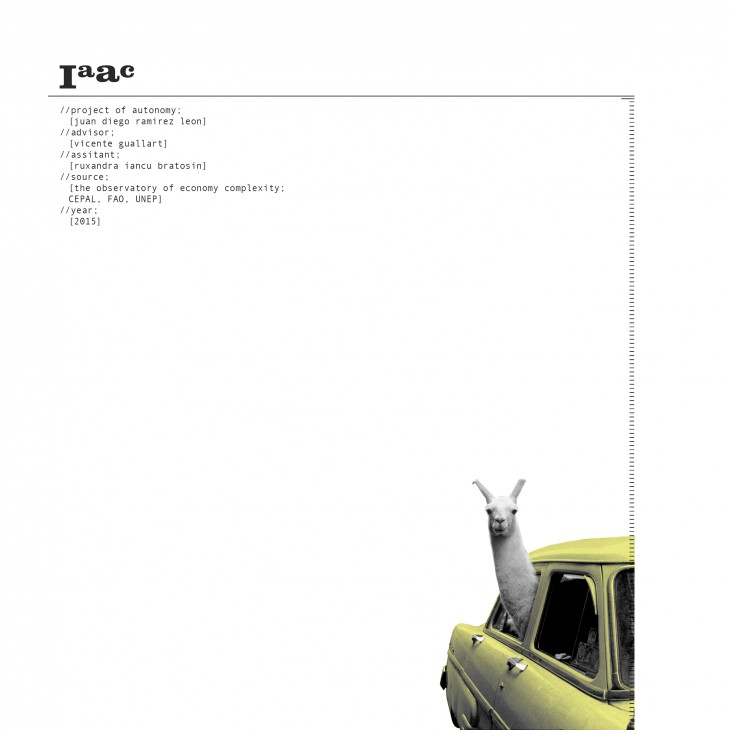
>>[autonomy project][the paradigm of city architecture] is a project of IaaC, Institute for Advanced Architecture of Catalonia developed at the Master of Advanced Architecture MAA02 [2014-2016] by:
Studend: Diego Ramirez
Faculty: Vicente Guallart // Ruxandra Bratosin
